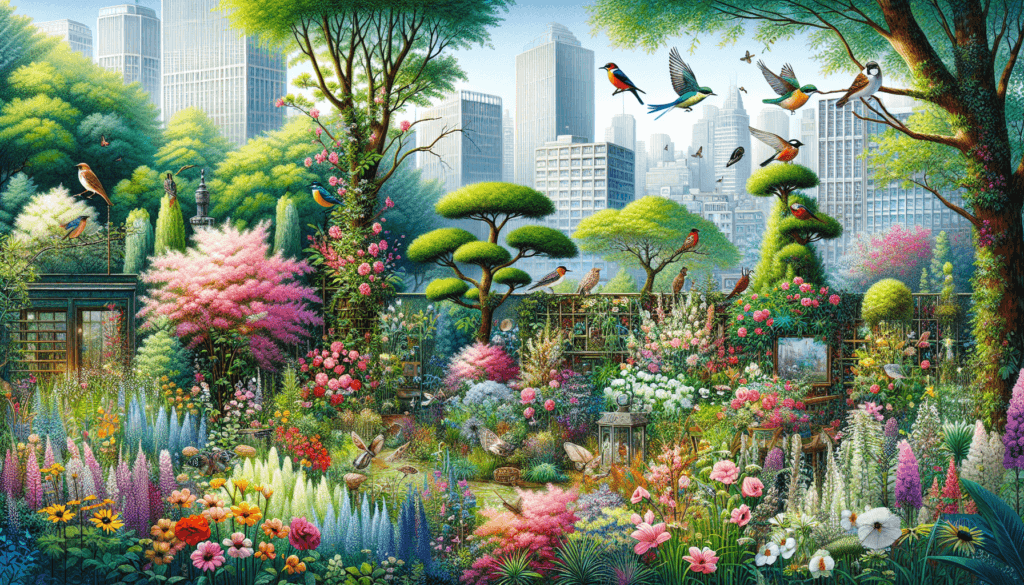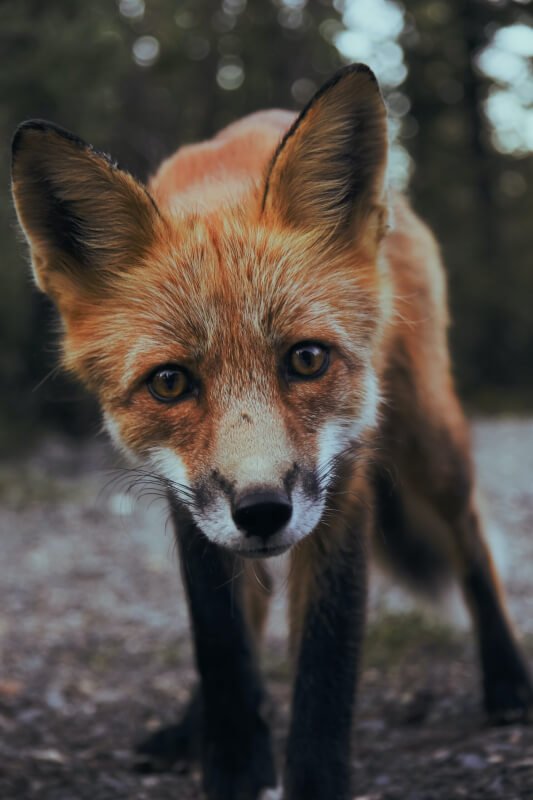Imagine transforming your urban oasis into a haven for birds and pollinators, where the buzzing of bees and the chirping of birds fill the air. In this article, we will explore the wonderful world of urban gardening and how you can attract these beautiful creatures to your own backyard. Whether you have a small balcony or a spacious garden, discover the simple yet effective techniques that will make your outdoor space an irresistible sanctuary for wildlife. From selecting the right plants to providing essential resources, get ready to embrace the magic of urban gardening for wildlife.
Benefits of Urban Gardening for Wildlife
Creating Habitats for Birds and Pollinators
Urban gardening provides numerous benefits for wildlife, particularly for birds and pollinators. By creating gardens in urban areas, you are offering vital habitats for these creatures to thrive. With the increasing loss of natural habitats due to urbanization, urban gardens act as a sanctuary, attracting and supporting a diverse range of wildlife.
Birds require a variety of habitats to find shelter, feed, and raise their young. Urban gardens can provide a safe haven, offering both natural and artificial nesting places. The presence of vegetation, trees, and shrubs provides birds with protective cover, while birdhouses and nesting boxes can give them additional shelter options.
Pollinators, such as bees, butterflies, and hummingbirds, play a crucial role in plant reproduction. However, their populations have been declining due to habitat loss and pesticide use. Urban gardens can help reverse this trend by providing an abundance of nectar-rich flowers and suitable nesting sites. By creating a welcoming environment for pollinators in your garden, you are supporting the pollination of plants both locally and beyond.
Increasing Biodiversity in Urban Areas
One of the key benefits of urban gardening for wildlife is the promotion of biodiversity in urban areas. Urbanization often leads to the fragmentation and destruction of natural habitats, resulting in a loss of biodiversity. By cultivating gardens in urban spaces, you are creating small patches of greenery that can serve as stepping stones for wildlife, allowing them to move between larger habitats.
Urban gardens provide a more diverse range of flowering plants and trees compared to the often monoculture landscapes found in cities. This increased plant diversity attracts various insects, birds, and other wildlife, enriching the overall biodiversity of the area. Urban gardening not only benefits individual species but also helps to preserve and restore important ecological interactions.
Promoting Ecological Balance
Urban gardening plays a vital role in promoting ecological balance in urban environments. By providing habitats and resources for birds and pollinators, you are assisting in the natural control of pests and the pollination of plants. Birds feed on insects, helping to keep their populations in check and reduce the need for chemical pesticides.
Pollinators, such as bees, transfer pollen from one flower to another, enabling the fertilization and production of fruits and seeds. Without them, many plants would struggle to reproduce and produce food. By attracting and supporting pollinators through urban gardening, you contribute to the stability and health of the local ecosystem.
Choosing the Right Plants
Native Plants vs. Non-Native Plants
When selecting plants for your urban garden, consider the benefits of using native plants over non-native species. Native plants are adapted to the local environment and provide food and habitat for a wide range of wildlife. They are often more resilient, requiring less maintenance and water compared to non-native plants. By using native plants, you are supporting the overall health and ecological balance of your garden.
Non-native plants, on the other hand, may not provide the same level of benefits for wildlife. Some non-native plants may even become invasive, outcompeting and displacing native species. While non-native plants can still be attractive and suitable for gardening, it is essential to prioritize native species to maximize the benefits for wildlife.
Selecting Plants for Birds
To attract birds to your urban garden, choose plants that offer a variety of resources such as food, nesting materials, and cover. Trees and shrubs with berries or fruits are excellent food sources for birds. Consider planting native species like dogwood, serviceberry, or elderberry, which provide both food and shelter.
Flowering plants that produce nectar, such as coneflowers, salvias, and penstemons, can attract hummingbirds to your garden. Additionally, plants with dense foliage, like evergreen trees or shrubs, can provide essential cover and nesting spaces for birds.
Selecting Plants for Pollinators
To attract pollinators to your urban garden, choose plants that provide abundant nectar and pollen. Native wildflowers like aster, milkweed, and goldenrod are highly attractive to bees and butterflies. As these plants bloom at different times, try to incorporate a variety of flowering plants to provide a continuous food source throughout the seasons.
Consider planting a mix of flowers with different shapes, sizes, and colors to cater to various pollinators. Flowers with tubular shapes are ideal for attracting hummingbirds, while flat-topped or daisy-like flowers are popular among bees and butterflies. By selecting a diverse array of pollinator-friendly plants, you can ensure a constant buzz of activity in your urban garden.

Providing Essential Resources
Water Sources for Wildlife
Water is an essential resource for wildlife, and incorporating water sources into your urban garden can greatly benefit birds and other creatures. Adding birdbaths or shallow dishes with fresh water can provide birds with a vital drinking and bathing spot. Ensure that the water is clean and refreshed regularly to prevent the spread of disease.
Consider creating a small pond or installing a recirculating water feature to attract a variety of wildlife. Ponds provide a habitat for aquatic insects and amphibians, which, in turn, attract birds and other creatures. Water features not only provide drinking water but also act as a focal point for wildlife, enhancing the tranquility and beauty of your garden.
Shelter and Nesting Places for Birds
Providing adequate shelter and nesting spaces is crucial for birds in urban areas. Trees, shrubs, and densely planted areas offer protective cover and safe passage for birds. Ensure that your garden includes a variety of heights and structures, as different bird species have distinct preferences for nesting and roosting sites.
Install birdhouses or nesting boxes in suitable locations to mimic natural nesting sites. Research the specific requirements of the bird species in your area to determine the appropriate size, shape, and height of the birdhouses. By offering suitable shelter and nesting options, you can encourage birds to stay and raise their young in your urban garden.
Food Sources for Pollinators
To support pollinators in your urban garden, it is essential to provide a range of food sources throughout the seasons. Flowering plants are the primary source of nectar and pollen for pollinators. Incorporate a variety of plants that bloom at different times to ensure a continuous supply of food.
Choose plants with long-lasting blooms, such as asters or bee balm, as well as early-blooming and late-blooming species, such as crocuses or goldenrods. By offering a diverse selection of flowering plants, you can attract and sustain a wide range of pollinators in your garden.
Creating a Bird-Friendly Garden
Providing Different Types of Feeders
To create a bird-friendly garden, consider adding different types of bird feeders to cater to a variety of bird species. Tube feeders with small perches are suitable for small birds like finches, while platform feeders accommodate larger birds like cardinals or jays. Suet feeders can attract insect-eating birds like woodpeckers and nuthatches.
Offer a variety of bird food, including sunflower seeds, nyjer seeds, and suet, to attract a diverse range of birds. Place feeders at varying heights to accommodate different feeding preferences and to prevent aggressive encounters between species. Regularly clean and refill the feeders to maintain a healthy feeding environment.
Importance of Water Features
Water features play a vital role in attracting birds to your urban garden. Consider incorporating a birdbath or a shallow pool into your garden design. Place it in an open and visible spot but ensure there is nearby vegetation to provide cover for the birds.
The sound and sight of running water are particularly attractive to birds. Consider adding a small fountain or bubbling rock feature to create a continuous trickle or gentle flow. This will not only entice birds but also add a soothing element to your garden.
Creating Nesting Spaces
To encourage nesting birds in your urban garden, provide suitable nesting spaces. Trees and shrubs with dense foliage, such as evergreens or hedges, can provide excellent natural nesting sites. Planting native species that produce berries, fruits, or seeds can attract birds and also provide them with a food source.
In addition to natural nesting places, consider installing birdhouses or nesting boxes specifically designed for different bird species. Research the nesting requirements of local birds and place the birdhouses at appropriate heights and orientations. Providing safe and secure nesting spaces will increase the likelihood of birds choosing your garden as their breeding site.
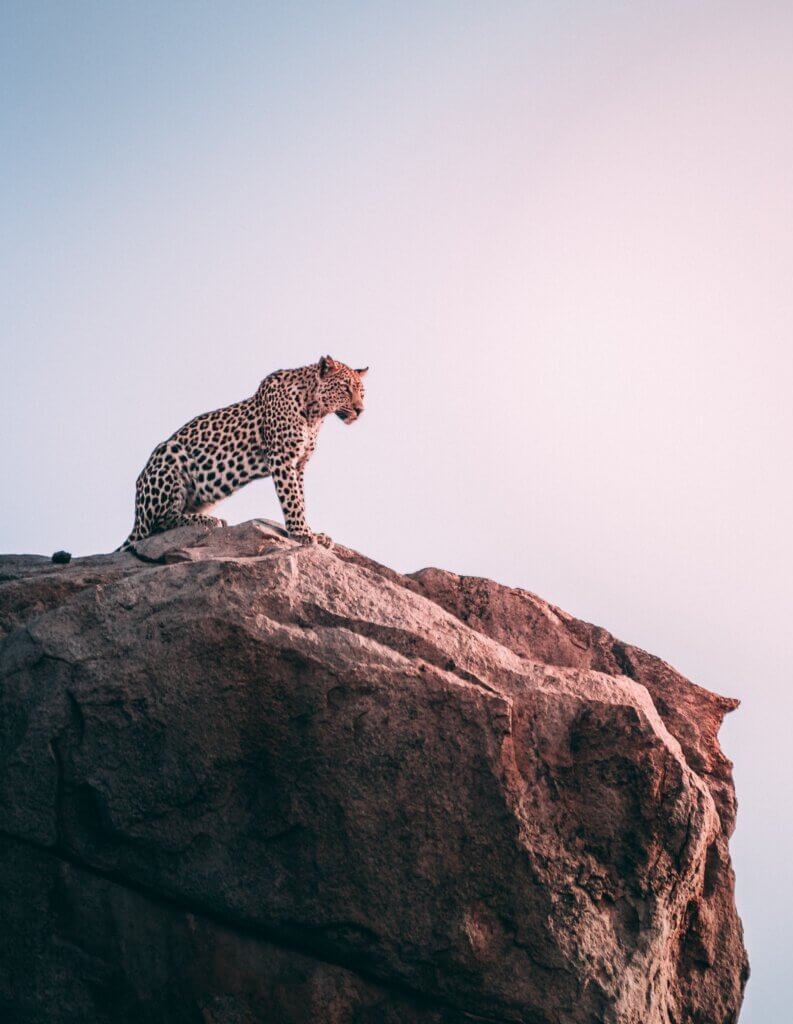
Attracting Pollinators to Your Garden
Choosing Pollinator-Friendly Plants
To attract pollinators, it is crucial to select plants that are attractive to these beneficial creatures. Native plants are typically the best choice, as they have evolved alongside local pollinators and provide the most suitable food sources. Research native wildflowers, shrubs, and trees that are known to attract pollinators in your region.
Look for plant species that produce ample amounts of nectar and pollen. Flowers with tubular shapes, like salvia or columbine, are popular among hummingbirds, while those with open shapes, such as sunflowers or daisies, are preferred by bees and butterflies. By choosing the right pollinator-friendly plants, you can ensure a continuous flow of pollinators to your garden.
Providing a Variety of Blooming Plants
To support pollinators throughout the seasons, it is essential to incorporate a variety of plants that bloom at different times. Early-blooming plants, such as crocuses or snowdrops, provide much-needed sustenance for pollinators emerging from hibernation. Late-blooming species, like asters or goldenrods, offer a vital source of food as summer transitions into fall.
Incorporate a mix of annuals, perennials, and flowering shrubs to create a diverse and long-lasting supply of blooming plants. By ensuring that there are always flowers in your garden, you will attract and sustain a variety of pollinators, contributing to their overall well-being and population.
Creating Suitable Habitats for Pollinators
In addition to providing nectar and pollen-rich plants, creating suitable habitats is crucial for attracting and supporting pollinators in your urban garden. Many species of bees, butterflies, and other pollinators require specific nesting sites or overwintering habitats.
Consider leaving patches of bare ground, as some solitary bees nest in the soil. Incorporate small piles of rocks or wood to provide shelter for insects to overwinter. Leave plant stems standing over winter, as some pollinators may use them for nesting or as overwintering sites. By accommodating the various habitat needs of pollinators, you create a more inviting and supportive environment for them in your garden.
Managing Pests and Diseases
Natural Pest Control Methods
In urban gardening, it is crucial to manage pests and diseases without relying on harmful chemicals. Encouraging natural pest control methods can help maintain a healthy balance in your garden. One effective method is attracting pest-eating insects and birds by providing diverse habitats and food sources.
Consider planting herbs and flowers that attract beneficial insects, such as ladybugs and lacewings, which feed on garden pests like aphids. Birds such as chickadees and wrens also help control insect populations by devouring harmful pests, including caterpillars and beetles. By promoting a diverse range of wildlife in your garden, you can naturally manage pests and maintain a healthy ecosystem.
Avoiding Harmful Chemicals
Using pesticides and herbicides in your garden can have detrimental effects on wildlife, including birds and pollinators. These chemicals not only kill pests but also harm beneficial insects, birds, and other creatures. When possible, avoid the use of harmful chemicals or opt for organic alternatives.
If pesticides are necessary, choose selective options that target specific pests rather than broadly affecting all insects. Apply them in the evening or early morning when pollinators are less active. By avoiding harmful chemicals, you will create a safer and more welcoming environment for wildlife in your urban garden.
Organic Fertilizers and Fungicides
While fertilizers and fungicides are typically used in gardening to promote plant growth and prevent disease, it is important to choose organic options that are safe for wildlife. Utilize organic fertilizers derived from compost or natural materials, which provide nutrients while minimizing harm to the environment.
To prevent fungal diseases, practice good garden hygiene by removing diseased plant material and incorporating crop rotation. Consider using organic fungicides, such as neem oil or copper-based products, if necessary. By opting for organic fertilizers and fungicides, you reduce the potential harm to wildlife and maintain a more sustainable garden.
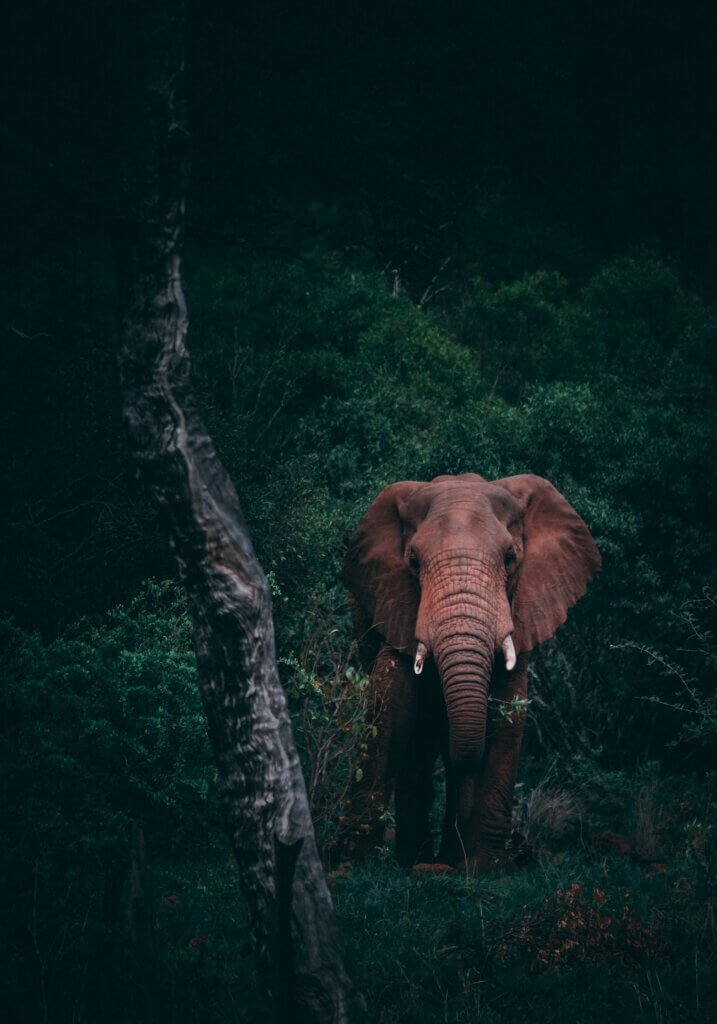
Maintaining a Wildlife-Friendly Garden
Regular Garden Maintenance
To ensure your urban garden remains wildlife-friendly, regular maintenance is essential. Regularly remove weeds and invasive plants to preserve the health and diversity of your garden. Pruning trees and shrubs when necessary improves their structure and longevity while providing suitable habitats for wildlife.
Monitor your garden for signs of pests and diseases, and take appropriate action to prevent their spread. Remove any fallen fruit or overripe produce, as they can attract unwanted pests. By keeping your garden well-maintained, you create a thriving and attractive space for wildlife.
Seasonal Care for Birds and Pollinators
Catering to the specific needs of birds and pollinators throughout the seasons is crucial for their survival and continued presence in your urban garden. During the colder months, provide additional sources of food for birds, such as high-energy suet or seed mixes. Create sheltered spaces with evergreen trees or shrubs to protect birds from harsh weather conditions.
For pollinators, leave some areas of your garden unmulched during the winter to provide overwintering sites for beneficial insects. In the spring, start planting early-blooming flowers to provide much-needed nourishment for emerging pollinators. Throughout the seasons, monitor and adjust your garden’s offerings to ensure a continuous supply of resources for birds and pollinators.
Creating a Year-Round Haven
To truly create a wildlife-friendly garden, aim to provide resources year-round. Incorporate a diversity of plants that offer food, water, and shelter throughout the changing seasons. Select trees or shrubs that provide berries or seedheads for birds during the winter months when other food sources are scarce.
Consider planting evergreen species to provide year-round cover and nesting spots for birds. Incorporating plants with different blooming periods ensures a continuous source of nectar and pollen for pollinators. By making your garden a year-round haven, you not only attract a greater diversity of wildlife but also provide a stable and sustainable environment for them.
Getting Involved in Community Efforts
Supporting Urban Wildlife Conservation Organizations
To further contribute to the well-being of wildlife in urban areas, consider supporting local wildlife conservation organizations. These organizations work towards preserving and restoring natural habitats, promoting biodiversity, and implementing sustainable practices.
Donate to these organizations or volunteer your time to help with their projects and initiatives. Participate in their educational programs and events to learn more about urban wildlife conservation and how you can make a difference in your own garden. By getting involved, you become part of a larger community effort to create a more wildlife-friendly urban environment.
Joining Community Gardening Projects
Joining community gardening projects is another way to make a positive impact on urban wildlife. Participate in local initiatives that aim to create green spaces and gardens in urban areas. Collaborate with fellow gardeners to share knowledge and resources, and collectively create larger and more interconnected habitats for wildlife.
Community gardening projects offer an opportunity to learn from experienced gardeners, exchange ideas, and contribute to the overall beauty and sustainability of your neighborhood. By joining forces with others, you can create a network of wildlife-friendly gardens that support a thriving urban ecosystem.
Educating Others about Wildlife Gardening
Sharing your knowledge and experiences with others is an effective way to promote and encourage wildlife gardening in urban areas. Educate your neighbors, friends, and family about the benefits of urban gardening for wildlife. Teach them about the importance of native plants, providing essential resources, and managing pests in an environmentally-friendly manner.
Host garden tours or workshops to share your expertise and inspire others to create their own wildlife-friendly gardens. Encourage schools, community centers, and local organizations to incorporate wildlife gardening into their curriculum or programming. By educating others, you help expand the network of wildlife-friendly gardens and increase the positive impact on urban wildlife.
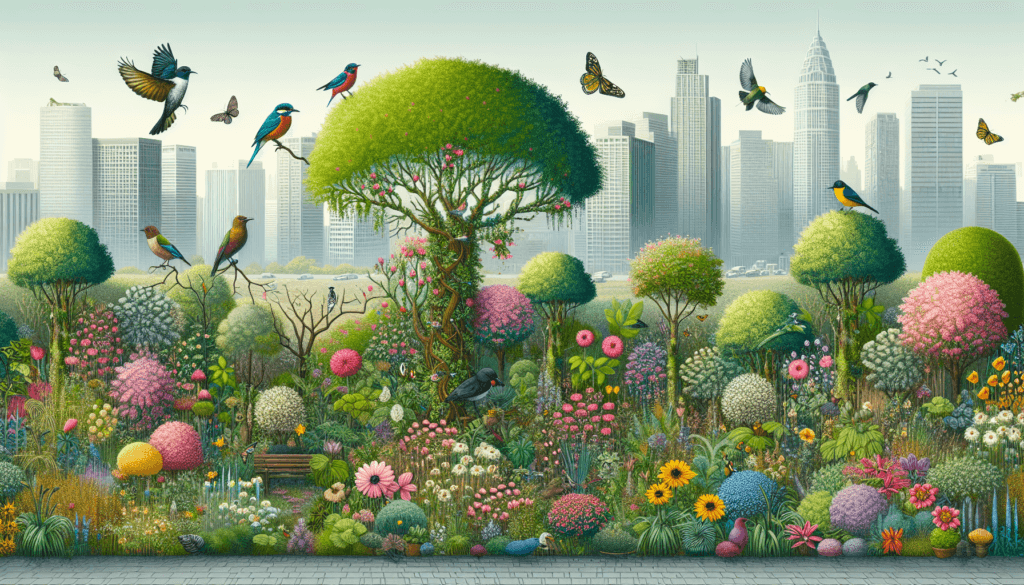
Overcoming Challenges in Urban Gardening
Limited Space and Urban Constraints
One of the challenges of urban gardening is the limited space available for creating wildlife-friendly habitats. However, even small balconies or window boxes can make a difference. Utilize vertical space by incorporating trellises or hanging baskets to maximize the planting area.
If you have access to a community garden or allotment, consider sharing gardening space with others to create larger, interconnected habitats. Collaborate with neighboring gardens to create green oases within urban landscapes. By overcoming the challenges of limited space, you can still create thriving habitats for wildlife in urban areas.
Dealing with Urban Predators
In urban environments, predators such as cats, raccoons, or squirrels can pose a threat to bird populations and other small creatures. To minimize these risks, take steps to deter or manage urban predators. Keep your garden clean and free of fallen fruit or seeds that may attract scavengers.
Consider installing predator deterrents such as motion-activated sprinklers or predator-proof fences. Placing birdhouses and nesting boxes in elevated and secure locations can reduce the chances of predator intrusion. By implementing appropriate measures, you can create a safer environment for wildlife in the presence of urban predators.
Managing Noise and Pollution
Urban gardening comes with the challenge of noise and pollution, which can impact wildlife and their habitats. Reduce noise levels by incorporating elements such as tall hedges or water features that act as natural sound barriers. Choose plants that are known for their ability to absorb noise, such as dense shrubs or tall grasses.
To combat pollution, be mindful of the types and sources of pollutants in your surroundings. Consider planting pollution-tolerant species or using plants with air-purifying properties. Regularly clean leaves to remove dust and debris that might hinder photosynthesis. By mitigating the effects of noise and pollution, you create a more welcoming and healthy environment for wildlife in your urban garden.
Conclusion
Urban gardening for wildlife offers invaluable benefits to both birds and pollinators. By creating habitats, providing essential resources, and maintaining a wildlife-friendly garden, you can attract and support a diverse range of wildlife in urban areas. Making thoughtful plant selections and implementing sustainable, organic practices will contribute to the overall health and balance of the ecosystem. By getting involved in community efforts and overcoming the challenges of urban gardening, you can make a positive impact not only in your own garden but in the broader urban environment. So grab your gardening tools and create a haven for wildlife right in your own backyard!
